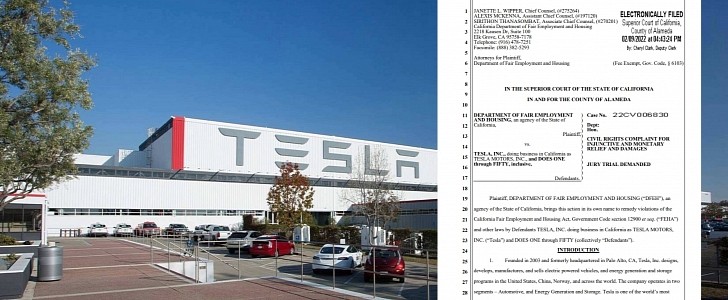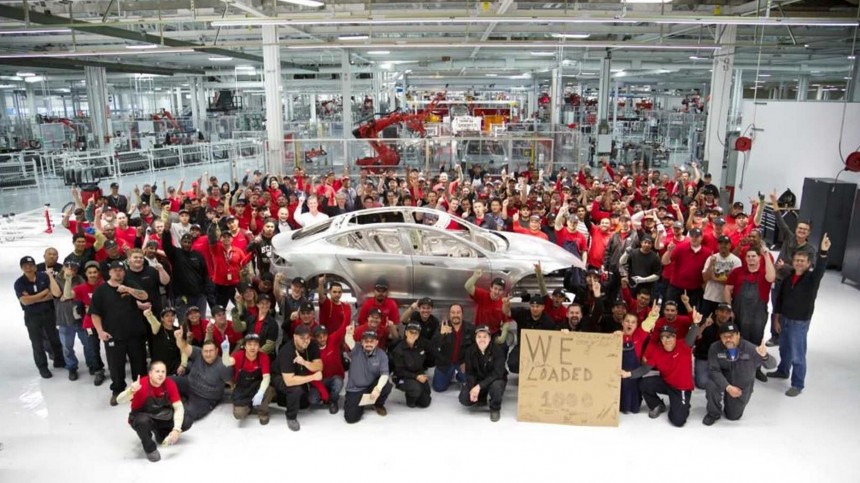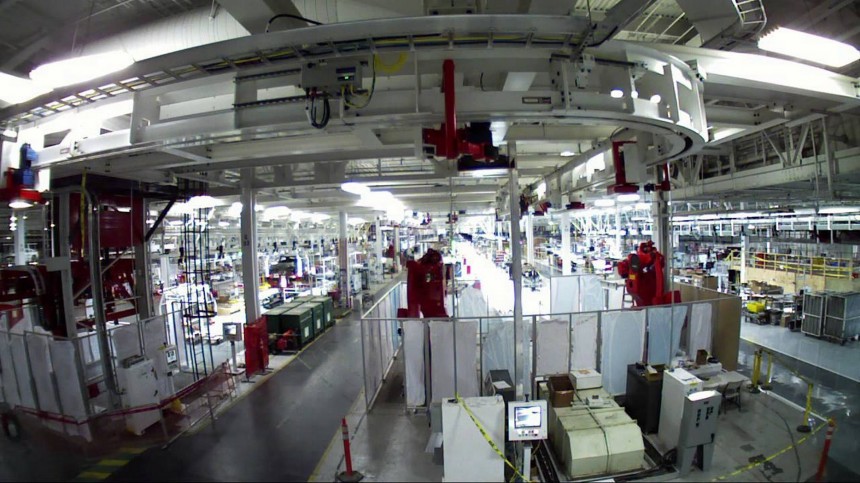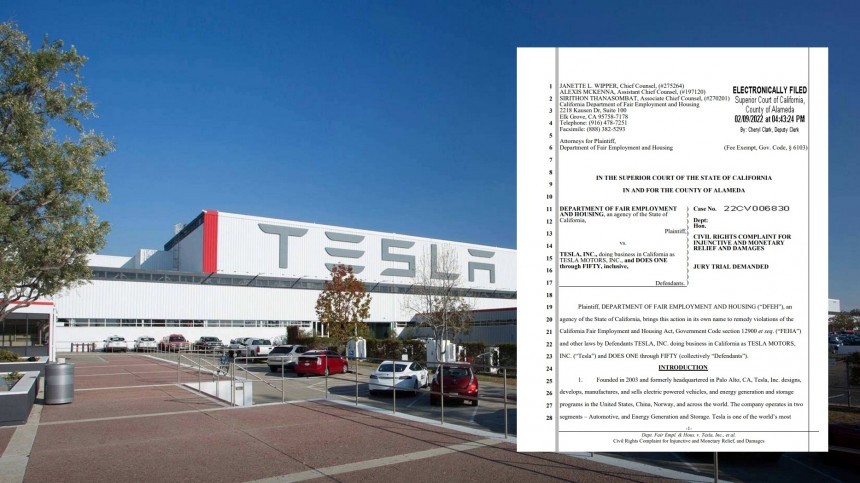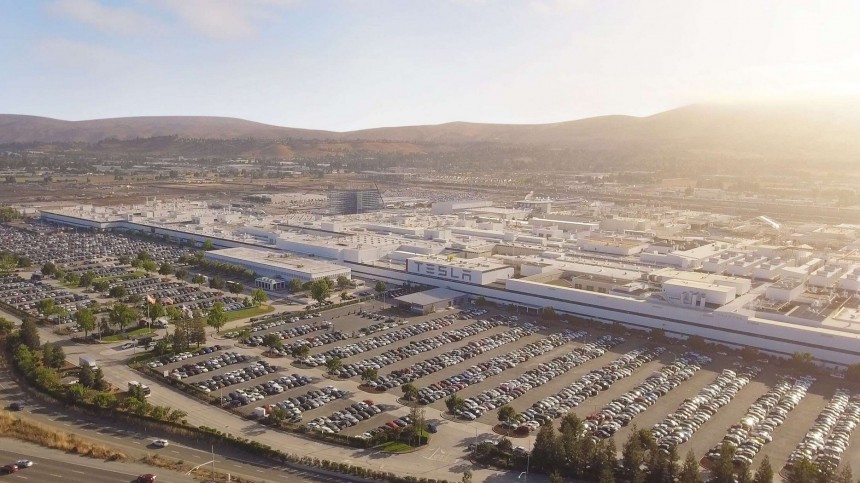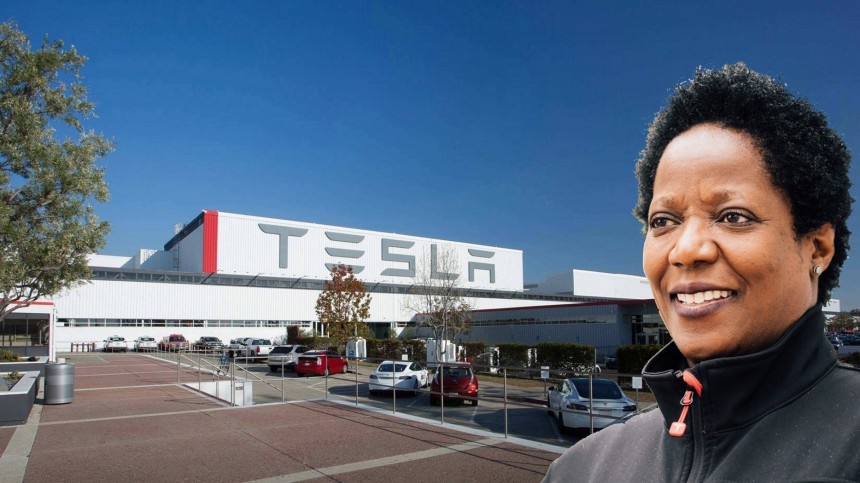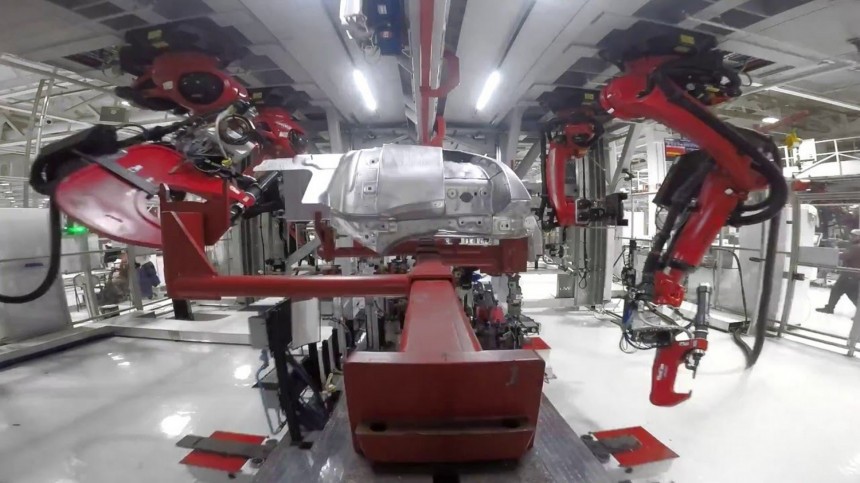At first, Giga Austin seemed to be related mainly to expanding Tesla’s operations in the U.S. When COVID-19 restrictions struck Alameda County, it became clear that the reasons could go beyond productivity gains. In its lawsuit against Tesla for “systematic racial discrimination and harassment,” the California DFEH (Department of Fair Employment and Housing) accused the company of moving to Texas to avoid accountability.
The Californian agency concluded a three-year investigation into Tesla, convinced that the American EV maker did very little to fight racism in Fremont. In the lawsuit, the Californian agency said this: “In another move to avoid accountability, Tesla, during its annual shareholder’s meeting in October 2021, announced plans to move its headquarters from Palo Alto, California to Austin, Texas.”
The lawsuit also contradicts many of the accusations Tesla made against the DFEH. The EV maker said that, “at a time when manufacturing jobs are leaving California, the DFEH has decided to sue Tesla instead of constructively working with us.” Tesla said that was “both unfair and counterproductive, especially because the allegations focus on events from years ago.” The Californian agency has a very different story to tell.
According to the lawsuit, DFEH “attempted to resolve this matter without litigation.” The Californian agency said it “invited Tesla to participate in a mediation session with the department’s internal dispute resolution division on January 12 and 20, 2022, but Tesla refused to attend until February 8, 2022.”
On February 7, 2022, “Tesla announced the DFEH investigation for the first time during the three-year investigation in its Securities and Exchange Commission Form 10-K.” On February 8, “the parties were unable to resolve the administrative complaints at the mediation.”
On February 9, Tesla published a blog post complaining about the Californian agency, implying it could leave the state for good due to that. The DFEH lawsuit was filed on the same day. It states it happened on February 9, 2021, which was clearly a typo.
The way DFEH puts it, it seems Tesla did everything it could to have a legal battle while pretending it did not want it. Considering the DFEH would not lie about a mediation session, the behavior Tesla presented in this case looks not only elusive, but also incredibly unwise, to put it in polite terms.
Owen Diaz won a lawsuit against Tesla for racial harassment and discrimination. A San Francisco jury ruled he should receive $6.9 million for emotional distress and $130 million for punitive damages. Tesla is now fighting to reduce the punitive damages award in courts. Confronted with the Californian agency’s lawsuit, the court may decide it was a fair value. And Tesla may have to pay even more if the Superior Court of California decides the DFEH’s allegations are correct.
The cases would also not be from years ago, as Tesla said. The company stated the DFEH “has been asked on almost 50 occasions by individuals who believe they were discriminated against or harassed to investigate Tesla.” According to the EV maker, it would have concluded all investigations “without a finding of misconduct against Tesla.” The DFEH denies that.
In its lawsuit, it said that “after approximately three years of investigation, receiving hundreds of complaints from workers and serving many to Tesla, DFEH issued a cause finding on January 3, 2022.” In other words, the investigation started around 2019 and ended very recently.
Summing up, we’re talking about hundreds of complaints, of which only some may have been served to Tesla. That’s probably why the company concluded that they were only “almost 50” instead of way more than that.
It is not clear why DFEH served only a few to Tesla nor why it issued only one cause finding to deal with hundreds of complaints. Perhaps a single, more general one was all it took, but we’d need to confirm that with the DFEH. We have sent a few questions to the Californian agency. All we received back was a copy of the lawsuit.
It shows the DFEH seems to have had enough with Tesla’s behavior. It states that “Mr. Musk is infamous for taking positions that run counter to those of other car companies, technology companies, billionaires and workers.” It also notes that “Tesla’s brand, purportedly highlighting a socially conscious future, masks the reality of a company that profits from an army of production workers, many of whom are people of color, working under egregious conditions.”
A little further ahead, the lawsuit shows a pretty grim working environment in Fremont. The DFEH did not expose the identity of the workers that complained about racism there or identified the people that perpetrated the multiple racial insults. They are only identified as “DOES ONE through FIFTY,” meaning that the DFEH “will amend this complaint to allege their true names and capacities when the same are ascertained.”
The DFEH does not spare the details of what African American workers go through “throughout the day, every day” at Fremont. Some of them claim to hear racial insults 50 to 100 times a day.
They include “the n-word, ‘porch monkey,’ ‘monkey toes,’ ‘boy,’ ‘hood rats,’ and ‘horse hair.’” African American workers also heard insults in Spanish, such as “mayate” (equivalent to the n-word or to calling someone gay, depending on the context) and “negrita” (little black woman).
They also hear racist jokes such as “n-word out of the hood,” “from the ghetto,” “Tesla [was] hiring lazy coons,” and “go back to Africa.” DFEH also says that the factory is racially segregated, which allegedly causes areas with a majority of African American workers to be referred to as “porch monkey station,” “slaveship,” or “the plantation,” where the management would “crack the whip.”
The environment in Fremont is described as threatening to African Americans. They see "swastikas, ‘KKK,’ the n-word, and other racist writing” onto “walls of restrooms, restroom stalls, lunch tables, and even factory machinery." "One Black worker observed ‘hang N[ ]’ penned next to a drawing of a noose in the breakroom restroom. This worker also saw ‘all monkeys work outside’ and ‘f[ ] N[ ]’ on the breakroom walls."
Workers with Confederate flag tattoos allegedly exhibit them proudly to try to start a fight with African Americans. If any altercation emerges, the latter are punished more severely, which can include even terminations. The same would not happen to the employees provoking the African American workers.
The DFEH also accuses Tesla of employing African American people in “more physically demanding posts and the lowest-level contract roles." Tesla would also pay them less and prevent them from “advancement opportunities.” There are reports of “only Black and/or African American workers cleaning the factory floor on their hands and knees,” something no other group of employees allegedly had to endure.
The Californian agency even traced a racial profile of Tesla workers. According to it, “Black and/or African American workers make up 0% of executives and about 3% of professionals at the Fremont plant.” On the other hand, “about 20% of the factory operatives, such as engine and other machine assemblers, are Black and/or African American."
The issue is that the DFEH did not do its homework as it should. It also states in the lawsuit that “segregation at the Fremont factory, along with the absence of Black and/or African Americans in leadership roles, has left many complaints of rampant racism unchecked for years.” The Californian agency either completely forgot about Valerie Capers Workman, Tesla’s former vice president of people, or tried to exempt her from responsibility to reinforce the narrative that an African American executive could have prevented racism.
Workman is African American and she worked for Tesla for four years. She became the company’s vice president of people in July 2020. If she did not do anything about the “systematic racial discrimination and harassment” in her one year and seven months as the main human resources executive at the company, there are only two possible explanations for that: either Workman did not think there was anything wrong, or she could not do anything about it.
When Diaz won his lawsuit against Tesla on October 4, 2021, Workman’s email to employees ended up as a Tesla blog post as well. It is still online and states that she “strongly” believed that “these facts don’t justify the verdict reached by the jury in San Francisco.” Workman also said Diaz was not a Tesla employee – as if what happened to him inside Fremont was less severe due to being a contract worker – and that “he didn’t make any complaints about the n-word until after he was not hired full-time by Tesla – and after he hired an attorney.”
The DFEH lawsuit presents 13 causes of action against Tesla. Summing them up, they have to do with racial harassment, racial discrimination in the work environment (leading to worse employment conditions for African Americans), retaliation against those who complained, and fail to keep records of complaints.
The DFEH is asking Tesla to be judged by a jury. If convicted, the Californian agency wants the EV maker to pay:
1. Compensatory and punitive damages;
2. Economic damages and equitable relief (...);
3. Liquidated damages and penalties, as required by law;
4. Injunctive relief;
5. Declaratory relief;
6. Prejudgment interest, as required by law;
7. Attorneys’ fees and costs to the Department of Fair Employment and Housing; and
8. Other relief the Court deems to be just and proper
That can represent a significant financial blow to Tesla, even worse than that caused by the Owen Diaz case. After all, we are now talking about “hundreds” of complaints with really serious reports of racial harassment and discrimination. That’s something Tesla and its investors have to worry about.
For us, what is more shocking is having to imagine anyone working every day in a hostile environment such as the one described by the DFEH lawsuit. If that is really how things are there, the quality problems Tesla vehicles suffer finally have a convincing – and pretty sad – explanation.
The lawsuit also contradicts many of the accusations Tesla made against the DFEH. The EV maker said that, “at a time when manufacturing jobs are leaving California, the DFEH has decided to sue Tesla instead of constructively working with us.” Tesla said that was “both unfair and counterproductive, especially because the allegations focus on events from years ago.” The Californian agency has a very different story to tell.
According to the lawsuit, DFEH “attempted to resolve this matter without litigation.” The Californian agency said it “invited Tesla to participate in a mediation session with the department’s internal dispute resolution division on January 12 and 20, 2022, but Tesla refused to attend until February 8, 2022.”
On February 9, Tesla published a blog post complaining about the Californian agency, implying it could leave the state for good due to that. The DFEH lawsuit was filed on the same day. It states it happened on February 9, 2021, which was clearly a typo.
The way DFEH puts it, it seems Tesla did everything it could to have a legal battle while pretending it did not want it. Considering the DFEH would not lie about a mediation session, the behavior Tesla presented in this case looks not only elusive, but also incredibly unwise, to put it in polite terms.
Owen Diaz won a lawsuit against Tesla for racial harassment and discrimination. A San Francisco jury ruled he should receive $6.9 million for emotional distress and $130 million for punitive damages. Tesla is now fighting to reduce the punitive damages award in courts. Confronted with the Californian agency’s lawsuit, the court may decide it was a fair value. And Tesla may have to pay even more if the Superior Court of California decides the DFEH’s allegations are correct.
In its lawsuit, it said that “after approximately three years of investigation, receiving hundreds of complaints from workers and serving many to Tesla, DFEH issued a cause finding on January 3, 2022.” In other words, the investigation started around 2019 and ended very recently.
Summing up, we’re talking about hundreds of complaints, of which only some may have been served to Tesla. That’s probably why the company concluded that they were only “almost 50” instead of way more than that.
It is not clear why DFEH served only a few to Tesla nor why it issued only one cause finding to deal with hundreds of complaints. Perhaps a single, more general one was all it took, but we’d need to confirm that with the DFEH. We have sent a few questions to the Californian agency. All we received back was a copy of the lawsuit.
A little further ahead, the lawsuit shows a pretty grim working environment in Fremont. The DFEH did not expose the identity of the workers that complained about racism there or identified the people that perpetrated the multiple racial insults. They are only identified as “DOES ONE through FIFTY,” meaning that the DFEH “will amend this complaint to allege their true names and capacities when the same are ascertained.”
The DFEH does not spare the details of what African American workers go through “throughout the day, every day” at Fremont. Some of them claim to hear racial insults 50 to 100 times a day.
They also hear racist jokes such as “n-word out of the hood,” “from the ghetto,” “Tesla [was] hiring lazy coons,” and “go back to Africa.” DFEH also says that the factory is racially segregated, which allegedly causes areas with a majority of African American workers to be referred to as “porch monkey station,” “slaveship,” or “the plantation,” where the management would “crack the whip.”
The environment in Fremont is described as threatening to African Americans. They see "swastikas, ‘KKK,’ the n-word, and other racist writing” onto “walls of restrooms, restroom stalls, lunch tables, and even factory machinery." "One Black worker observed ‘hang N[ ]’ penned next to a drawing of a noose in the breakroom restroom. This worker also saw ‘all monkeys work outside’ and ‘f[ ] N[ ]’ on the breakroom walls."
Workers with Confederate flag tattoos allegedly exhibit them proudly to try to start a fight with African Americans. If any altercation emerges, the latter are punished more severely, which can include even terminations. The same would not happen to the employees provoking the African American workers.
The Californian agency even traced a racial profile of Tesla workers. According to it, “Black and/or African American workers make up 0% of executives and about 3% of professionals at the Fremont plant.” On the other hand, “about 20% of the factory operatives, such as engine and other machine assemblers, are Black and/or African American."
The issue is that the DFEH did not do its homework as it should. It also states in the lawsuit that “segregation at the Fremont factory, along with the absence of Black and/or African Americans in leadership roles, has left many complaints of rampant racism unchecked for years.” The Californian agency either completely forgot about Valerie Capers Workman, Tesla’s former vice president of people, or tried to exempt her from responsibility to reinforce the narrative that an African American executive could have prevented racism.
When Diaz won his lawsuit against Tesla on October 4, 2021, Workman’s email to employees ended up as a Tesla blog post as well. It is still online and states that she “strongly” believed that “these facts don’t justify the verdict reached by the jury in San Francisco.” Workman also said Diaz was not a Tesla employee – as if what happened to him inside Fremont was less severe due to being a contract worker – and that “he didn’t make any complaints about the n-word until after he was not hired full-time by Tesla – and after he hired an attorney.”
The DFEH lawsuit presents 13 causes of action against Tesla. Summing them up, they have to do with racial harassment, racial discrimination in the work environment (leading to worse employment conditions for African Americans), retaliation against those who complained, and fail to keep records of complaints.
1. Compensatory and punitive damages;
2. Economic damages and equitable relief (...);
3. Liquidated damages and penalties, as required by law;
4. Injunctive relief;
5. Declaratory relief;
6. Prejudgment interest, as required by law;
7. Attorneys’ fees and costs to the Department of Fair Employment and Housing; and
8. Other relief the Court deems to be just and proper
That can represent a significant financial blow to Tesla, even worse than that caused by the Owen Diaz case. After all, we are now talking about “hundreds” of complaints with really serious reports of racial harassment and discrimination. That’s something Tesla and its investors have to worry about.
For us, what is more shocking is having to imagine anyone working every day in a hostile environment such as the one described by the DFEH lawsuit. If that is really how things are there, the quality problems Tesla vehicles suffer finally have a convincing – and pretty sad – explanation.
